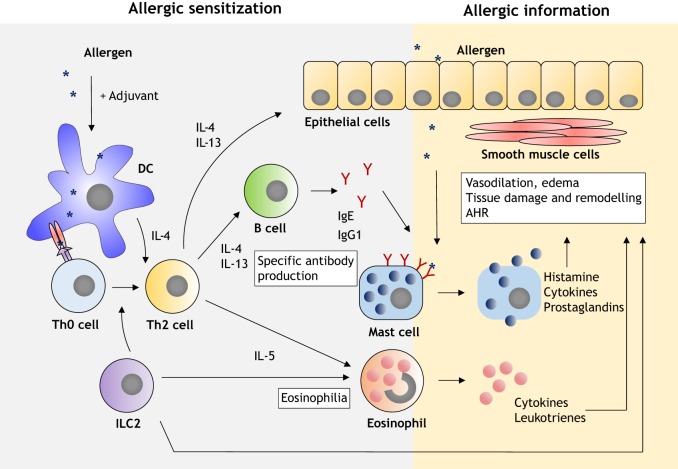Fig. 1.
Mechanisms of allergy induction in murine models. During allergic sensitization, antigen-presenting cells (e.g. DCs) induce the generation of Th2 cells (Humeniuk et al., 2017). Th2 cytokines IL-4, IL-5 and IL-13 promote eosinophil recruitment (eosinophilia) and induce tissue inflammation, which is exacerbated by type 2 innate lymphoid cells (ILC2; Box 1) action. Th2 cells also interact with B cells to induce the production of allergen-specific IgE and IgG1, which bind to effector cells (e.g. mast cells) at mucosal surfaces (Galli and Tsai, 2012; Nials and Uddin, 2008). Allergic inflammation is induced upon repeated contact with the allergen, which promotes the release of inflammatory mediators affecting the surrounding tissues and leading to symptom development (Nials and Uddin, 2008).

